School History: Groveton High School
Remembering Our Past
In 1951, the Fairfax County School Board purchased land for a new high school at Groveton. The property remained undeveloped for several years because funding for school construction lagged. In July 1954, Fairfax County Public Schools (FCPS) received $932,000 in federal impact aid funding to construct the new high school. Additional funding was raised through the sale of bonds, and, on September 28, 1954, the School Board awarded the contract for the construction of Groveton High School to Eugene Simpson & Brother, Inc., for $1.65 million.
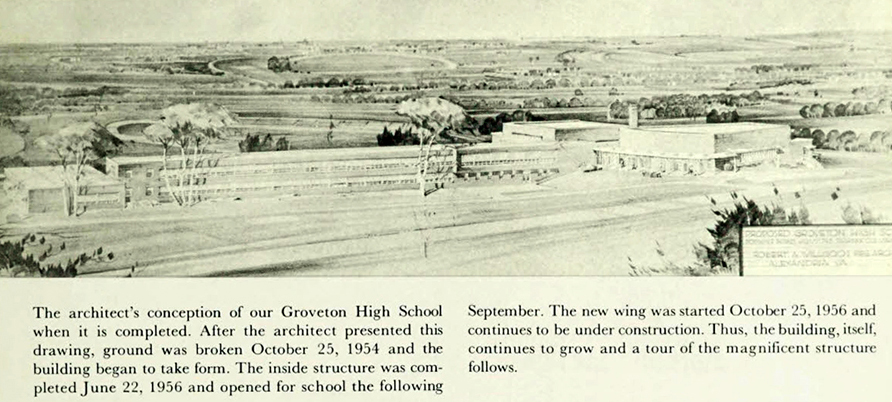
Groveton High School opened its doors to students for the first time on September 4, 1956. At that time, enrollment in FCPS was about 38,500 students, up from 17,680 just five years earlier. Groveton High School opened with an enrollment of about 900 students in grades 8-11. The school’s first principal was Emory W. Chesley.
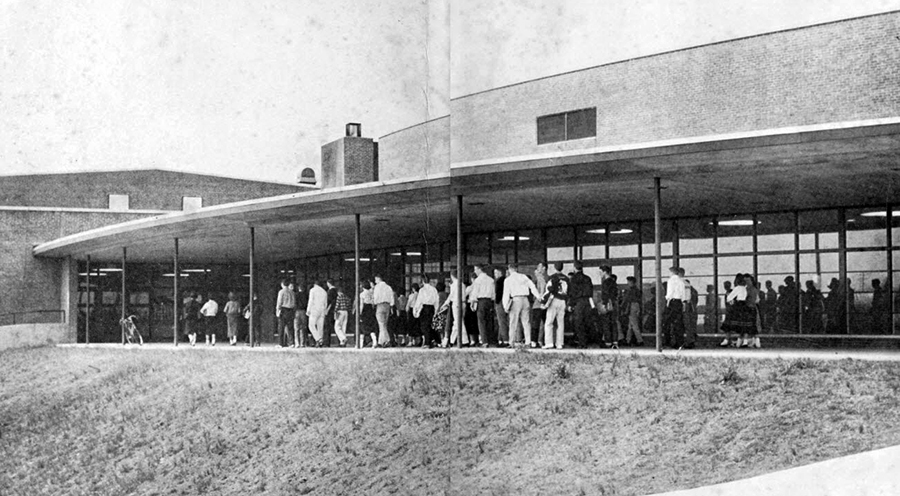
There was no Student Cooperative Association during the first year, so a steering committee was set up to organize student activities. The publication of Groveton’s newspaper, The Tiger Rag , was accomplished by the combined efforts of the newspaper club, school staff, and the journalism class. The Tiger Rag was published monthly for the first semester and bi-monthly thereafter.
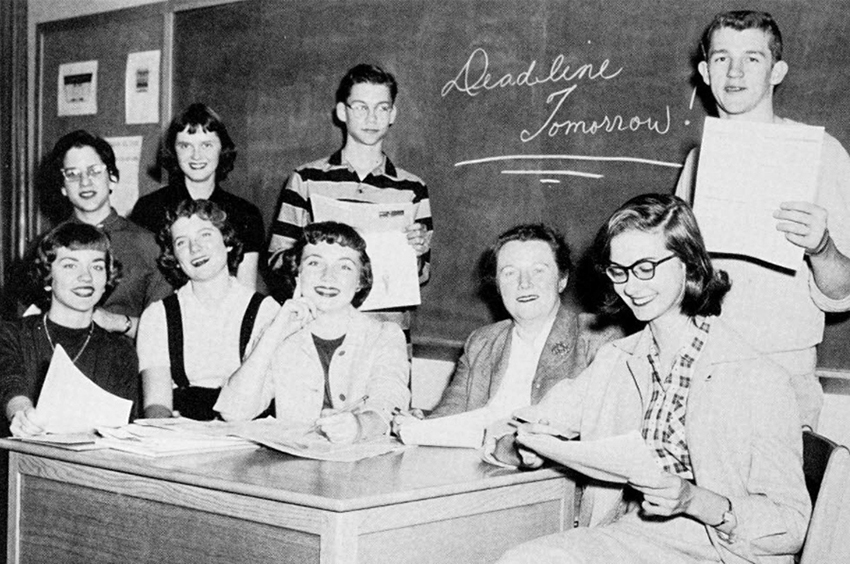
On October 25, 1956, construction began on an 18-classroom addition to Groveton. Constructed in record time, the addition was ready for use in September 1957. In 1957-58, FCPS had an enrollment of about 44,000 students, and Groveton High School operated with grades 8-12.
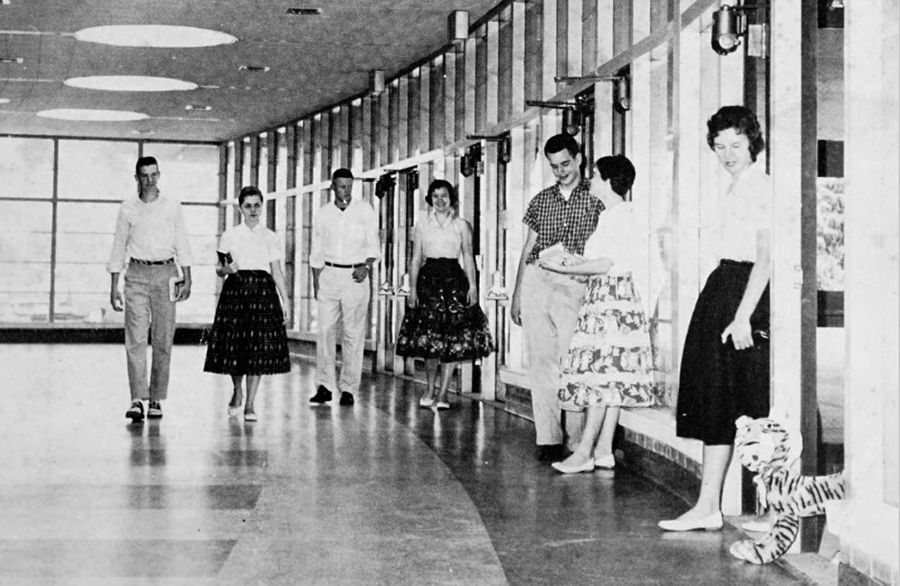
During its first and second years, Groveton’s athletic field was plagued by water drainage problems, which hampered the ability of physical education teachers to conduct classes and prevented use of the grounds for after school athletic events. In spring 1958, the Tigers’ home baseball games were held at Mount Vernon High School. It was hoped that the problem could be corrected in time for the fall 1958 football season.
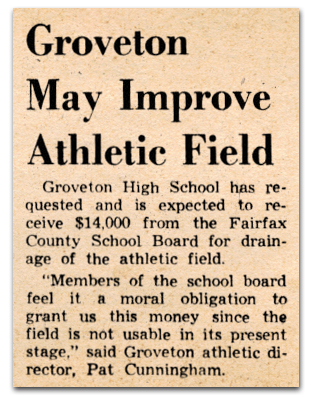
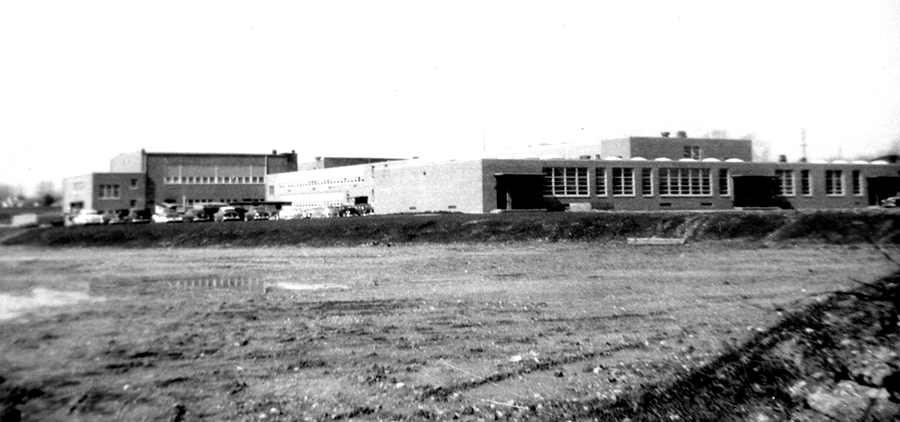
In February 1958, the long-awaited uniforms for Groveton’s Golden Tiger Band finally arrived. Two months later, in April 1958, the Northern Virginia Sun reported that Groveton had two semi-finalists in the Merit Scholarship Competition and had received two letters of commendation. The school’s senior guidance counselor, Mollie Keese, told reporters that 120 out of some 160 seniors had sent applications to colleges and that several students had been accepted by top institutions. Groveton graduated its first class of seniors in June 1958.
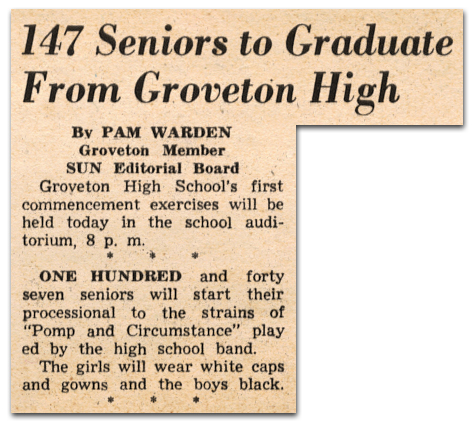
During the summer of 1958, the water drainage problem on the school grounds was corrected and the athletic field was relocated to the improved site. In September 1958, Groveton High School had 78 teachers and an enrollment of 1,449 students, up from 1,350 the previous year. Indicative of the baby boom, the largest of the school’s five classes was the eighth-grade, which had about 350 students.
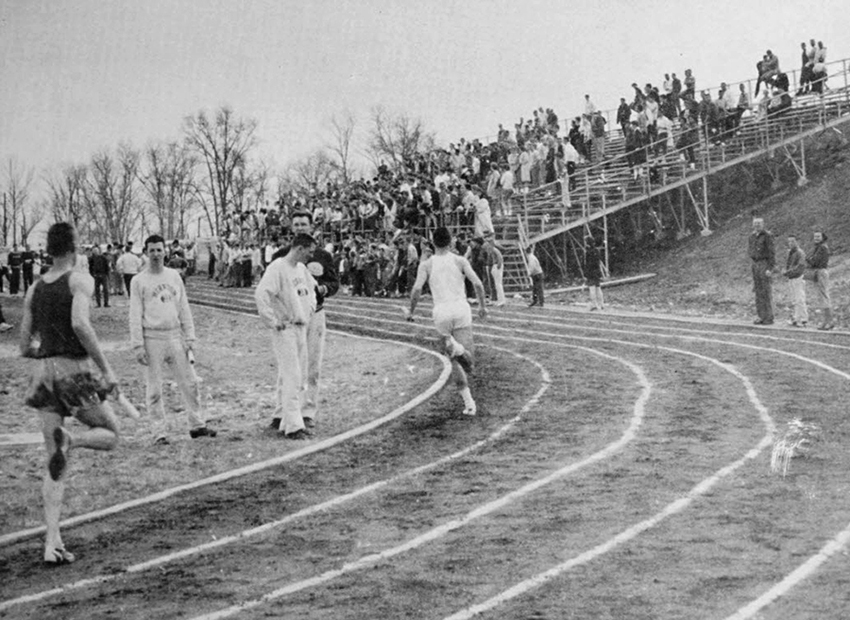
The freshman class of Groveton High is sponsoring a “Sadie Hawkins Dance” from 8 to 11:30 p.m. on Saturday, March 5, in the cafeteria. Paul Farley’s band “The Twilighters” will provide the music. ~ Northern Virginia Sun , March 4, 1960
Desegregating Groveton
In September 1960, FCPS opened its first intermediate schools and Groveton’s eighth grade classes were reassigned to William Cullen Bryant Intermediate School. Also in 1960, the racial desegregation of the county’s public schools began. In late September, Judge Albert V. Bryan of the Federal District Court in Alexandria, Virginia, struck down a grade-per-year desegregation plan that had recently been implemented by the Fairfax County School Board. One of the parties to the lawsuit was Rayfield Barber, a resident of the Spring Bank community who wanted to enroll at the all-white Groveton High School, rather than be bused to the all-Black Luther Jackson High School, because Groveton was much closer to his home. Shortly after Judge Bryan’s ruling, Rayfield Barber was enrolled in the freshman class at Groveton. In this interview, Mr. Barber shares his memories of being the first student to integrate a public high school in Fairfax County.
In 1960, Groveton High School was sporting new bleachers in its football stadium and gymnasium. The football bleachers had a capacity of 2,000 on the home side and 500 on the visiting side, and the bleachers in the gym could seat up to 800 spectators.
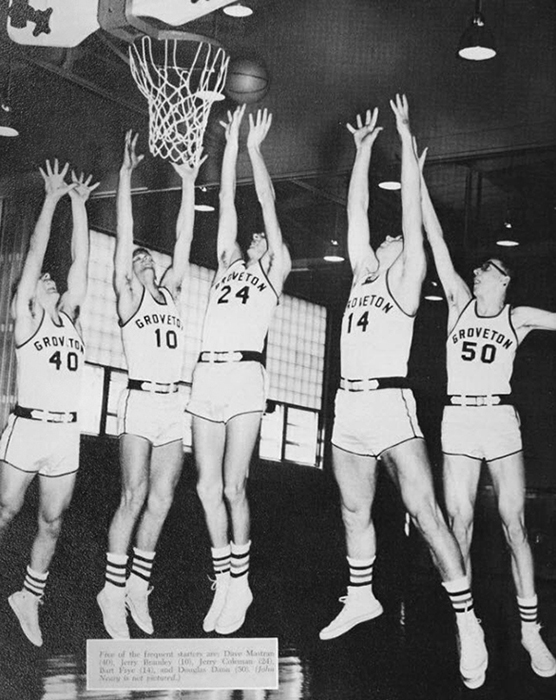
In September 1962, Groveton High School had an enrollment of about 1,550. As the racial desegregation of the public schools continued, the number of Black students at Groveton slowly increased from 35 in 1963 to 37 in 1964.
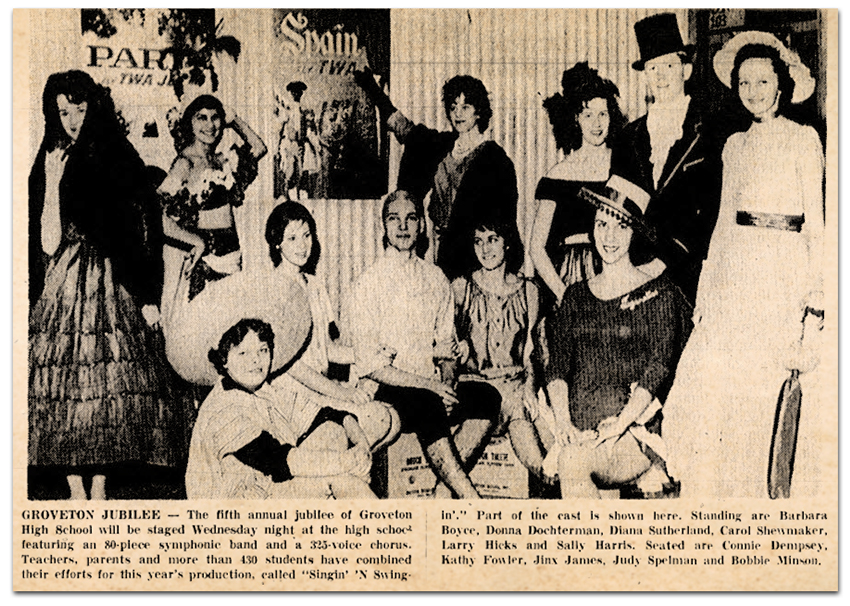
The New Groveton High School
As early as the spring of 1966, the School Board had begun studying a proposal to exchange campuses between Bryant Intermediate School and Groveton High School. Groveton High School had become significantly overcrowded. The property on which Groveton was located was too small to permit expansion of the facility, so FCPS began acquiring additional land around Bryant Intermediate School in anticipation of relocating Groveton to that site.
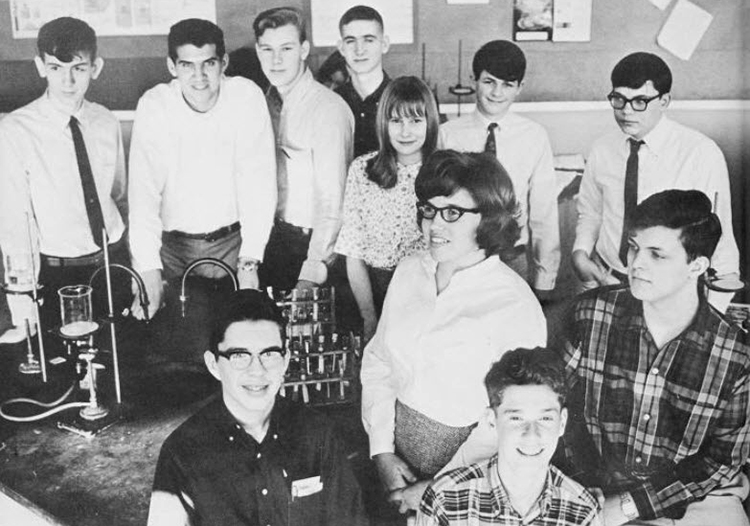
The plan, as outlined for the School Board in July 1966, was to convert Bryant Intermediate School into a 2,500-pupil capacity high school for opening in 1970. However, the project was stalled for several years due to a lack of funding. In the late 1960s, the School Board formed a working group composed of community members, educators, and architects called the Charrette Committee to design the new Groveton High School.
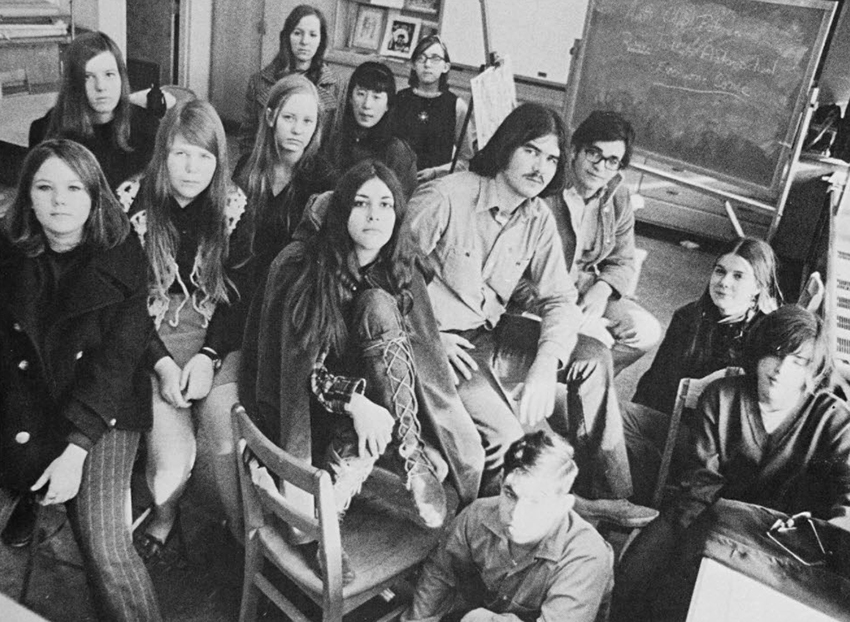
The Charrette Committee returned a proposal for a campus-style facility with several free-standing buildings. The new high school would become Fairfax County’s first “community school” with facilities for public health, neighborhood activities, and community meetings. The School Board approved the proposal in September 1971 and plans for its implementation went into action.
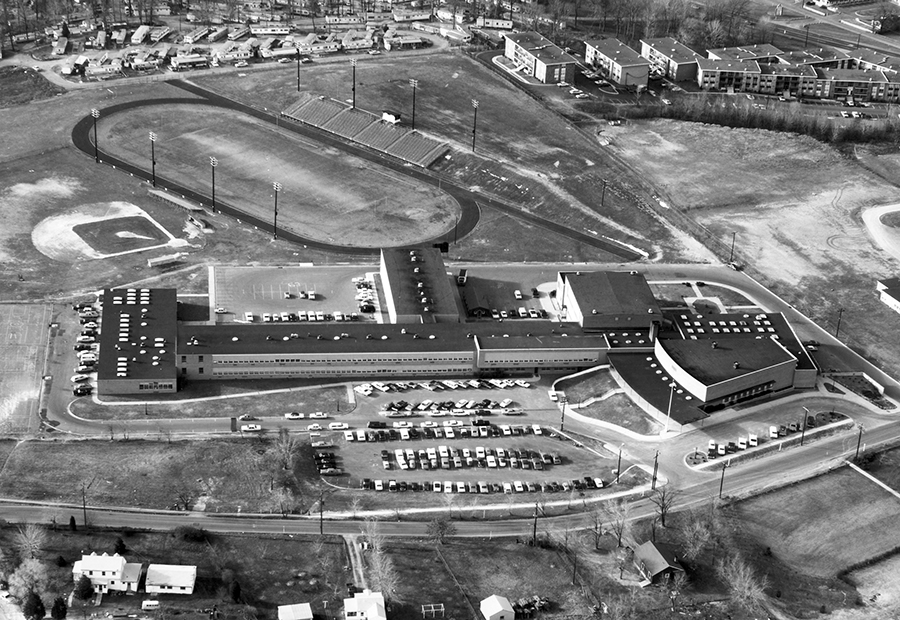
In June 1972, a referendum was held in which voters were asked to approve the sale of municipal bonds to fund the construction of multiple schools, including the new Groveton facility. Concerned that existing classroom space was not being utilized properly elsewhere in the county, many residents voted against the bond issue and it failed.
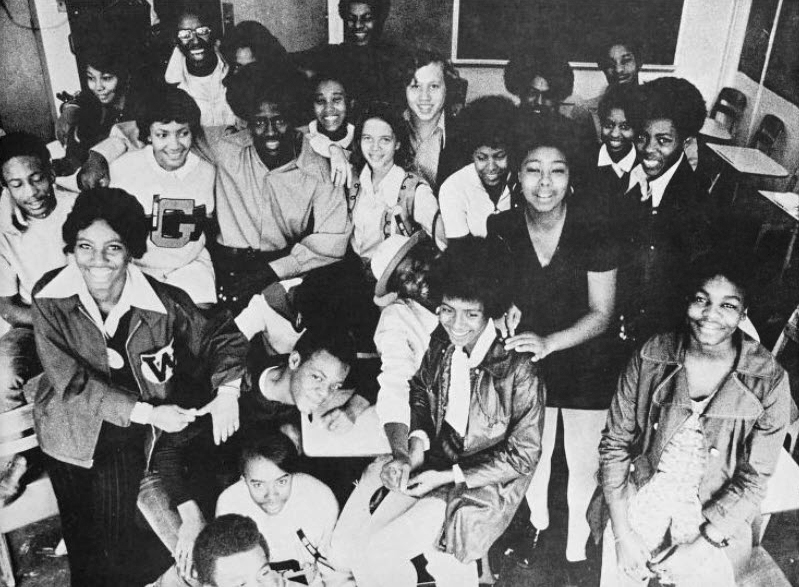
In 1973, another school bond referendum was held. This time, the School Board asked for just $24 million in municipal bond sales, which was about one-third of the amount previously asked for. The bond passed, and, on April 25, 1974, the School Board awarded the contract for the Bryant/Groveton conversion project to L. F. Jennings, Inc., for $6.8 million.
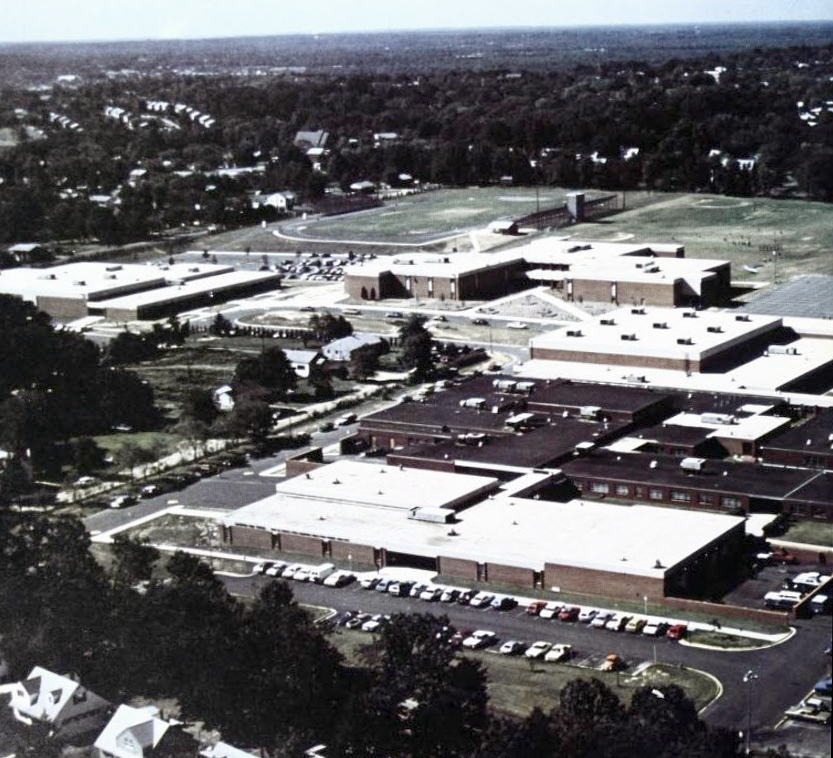
The Bryant lot will include three separate buildings. One will house the dramatic arts, musical arts, and art studies departments. Physical education, including a new gym, and vocational education, will be housed in the old Bryant building along with administration offices. The third building will include two sub-schools, academic studies, and a large media center. The cafeteria will be in the third building, and will serve to bring academic, artistic, and vocational students together. ~ Groveton High School Tigerama , 1975
On Sunday, October 24, 1976, a dedication ceremony for the new Groveton High School was held. The ceremony began at the old Groveton High School and then the Golden Tiger Marching Band and the Golden Tigerettes Baton Corps led a procession of students, officials, and parade floats to the new high school.
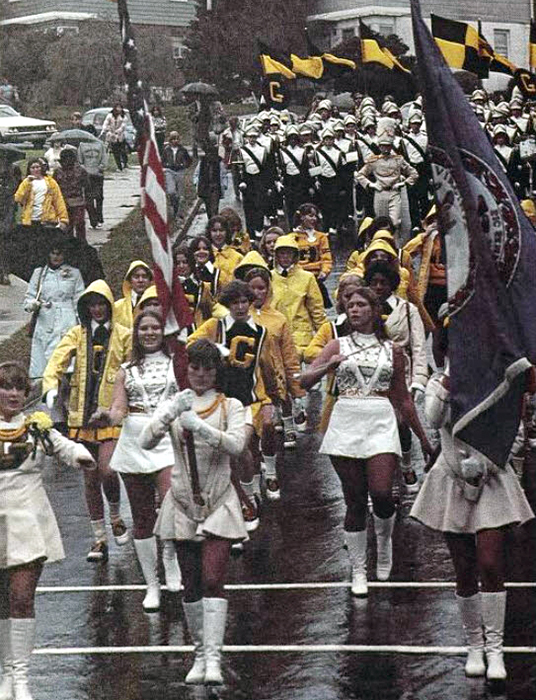
The new Groveton High School was made up of three buildings, one of which was the former Bryant Intermediate, which had been renovated and enlarged. A contest was held to name the three buildings and students elected to call them the Spring Bank Fine Arts Center, Quander Hall, and Gunston Hall.
The new high school has a little theater, extensive workrooms and laboratories for arts and sciences, tennis courts and athletic facilities, media centers, a beauty shop, auto shop, and a new health careers program to be launched next month. According to Principal R. Don Ford, all school facilities are open for public use as well as the three rooms designated as community rooms. A senior citizens group is being organized, adult education classes are being held in typing and sewing, a teen center is open every evening, and counselors from the mental health clinic are available at the school twice a week. ~ The Washington Post, October 28, 1976
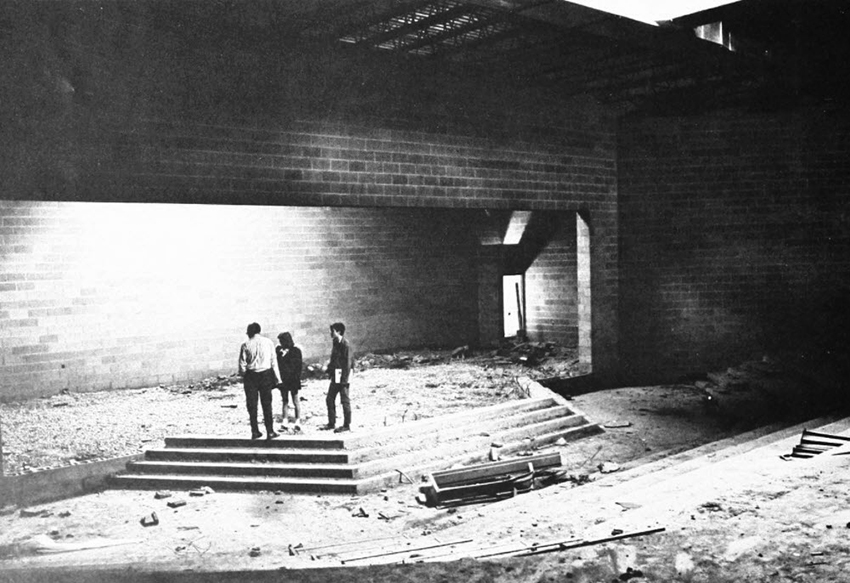
Groveton Closes
Pictured below is the Groveton High School varsity field hockey team in 1977. The Lady Tigers won the state championship in 1977, and were district champions in 1976, 1978, 1980, and 1983.
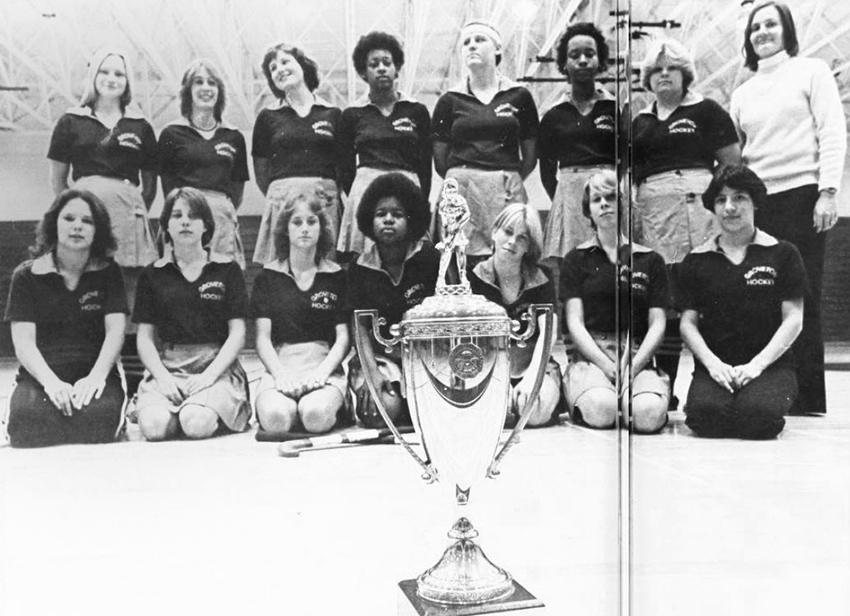
Attending Groveton is a peculiar privilege. It does have its rewards. Going to Groveton means having friends whose houses aren’t identical to your own, friends who aren’t identical to you. ~ Groveton High School Tigerama , 1978
In October 1981, Groveton’s Marching Golden Tigers won first place at the Tidewater Festival of Marching Bands. The school made headlines again in June 1982, when the debate team finished second in a national competition. In 1984, the South County Vocational Center was established at Groveton High School. The center was renamed in April 1989 in honor of Earl L. Pulley, a school administrator who had recently died.
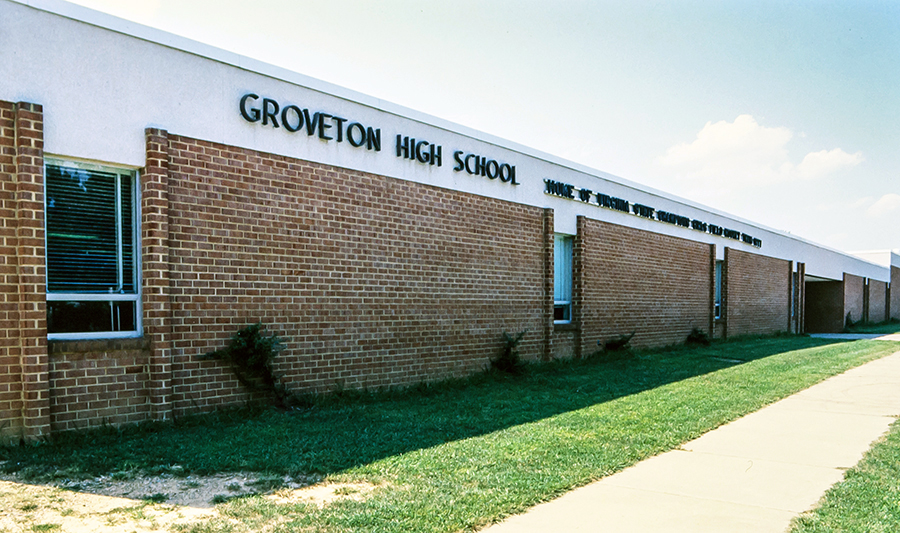
In 1972, after three decades of continued growth, enrollment in FCPS peaked at 138,000 students. From the mid-1970s into the 1980s, enrollment steadily declined, which led to the closure of 13 elementary schools between 1975 and 1982. As more and more students aged out of the school system, the intermediate and high schools began to see an abundance of empty classrooms.
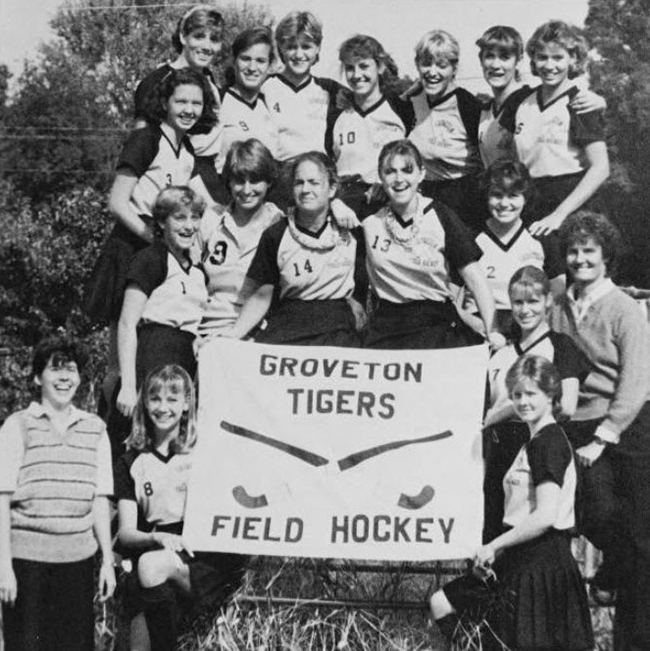
In 1985, citing high operating costs and declining enrollment, the School Board voted to close Fort Hunt High School and merge its student body with that of Groveton High School. The name Groveton was retired, and the school was renamed West Potomac High School.
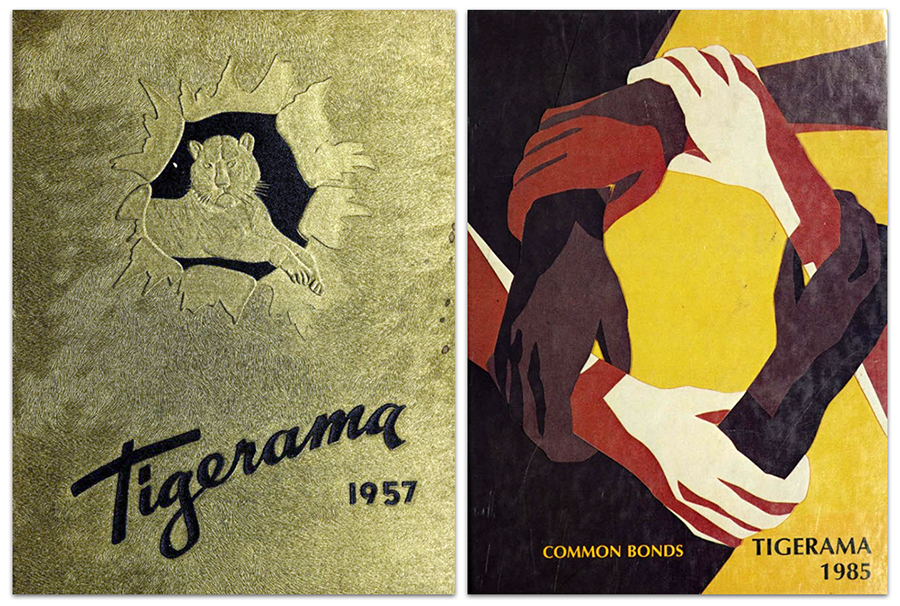
Groveton High School Yearbook Photographs (1956-1984)
The Dorothie Kogelman Theatre
On December 3, 1981, the School Board named the theatre at Groveton High School in honor of Dorothie Kogelman. Ms. Kogelman taught at Groveton from 1958 until her death in 1981. She was a drama teacher for 20 years and served as the school’s fine arts department chair for ten years. Under her leadership, Groveton High School students won superior ratings 18 times at one-act play festivals. Ms. Kogelman also initiated the Children’s Theatre and the Puppet Theatre, which toured elementary schools in the area. Dorothie Kogelman was deeply respected, admired, and emulated by students, and is remembered for her enthusiasm, vision, and dedication to excellence. She left an indelible imprint on Groveton and its students.
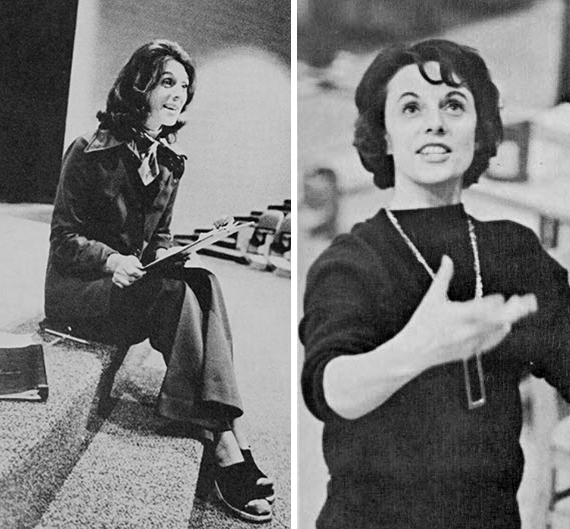
Groveton High School Alma Mater
The Groveton High School Alma Mater was printed in the 1957-58 yearbook:
Hail Groveton High School
Hail Thy name
Your Gold and Black be praised.
We stand by you with loyalty,
And always pledge our faith in Thee
Forever, we proclaim.
Hail Groveton High School
Hail Thy name
Stand fast for what is right.
Your shining symbol e’er will be
Our guide on to eternity
For truth and love and light.
Groveton High School Honor Code
We, the students of Groveton High School, believe in and shall strive to uphold the following principles:
- To show honesty and respect in our dealings with the faculty, students, and others.
- To strive for cleanliness and self-control in our speech and to keep degrading and unkind thoughts from our minds.
- To respect school property and the property of others.
- To avoid and discourage unfavorable habits which may bring discredit to us, our home, our school, and our community.
We accept these high standards as a necessity to our development of honor and integrity.

















